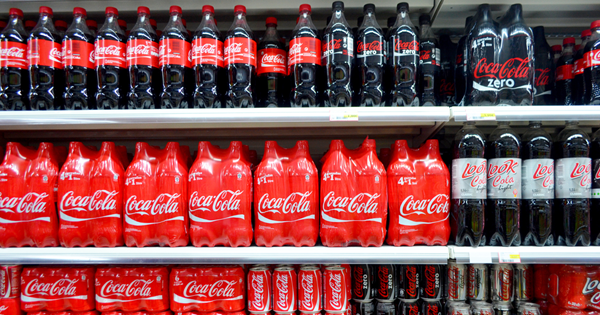Advertisement
For many people, drinking soda isn’t so much a treat as it is a regular refreshing beverage.
Even though soda is packed with more sugar than we can possibly imagine, it’s difficult to truly understand what happens to your body each time you drink it.
While we all know that consuming high-sugar foods, like ice cream and candy, can rot your teeth and pack on the pounds, we rarely view soda in that same light.
In an attempt to show us what drinking a can of soda really does to your body within the first 60 minutes, UK pharmacist Niraj Naik compiled this eye-opening infographic and featured it on his blog, The Renegade Pharmacist:

In The First 10 minutes: 10 teaspoons of sugar hit your system. (100 per cent of your recommended daily intake.) You don't immediately vomit from the overwhelming sweetness because phosphoric acid cuts the flavour allowing you to keep it down.
20 minutes: Your blood sugar spikes, causing an insulin burst. Your liver responds to this by turning any sugar it can get its hands on into fat. (There's plenty of that at this particular moment).
40 minutes: Caffeine absorption is complete. Your pupils dilate, your blood pressure rises, as a response your livers dumps more sugar into your bloodstream. The adenosine receptors in your brain are now blocked preventing drowsiness.
45 minutes: Your body ups your dopamine production stimulating the pleasure centres of your brain. This is physically the same way heroin works, by the way.
>60 minutes: The phosphoric acid binds calcium, magnesium and zinc in your lower intestine, providing a further boost in metabolism.
This is compounded by high doses of sugar and artificial sweeteners also increasing the urinary excretion of calcium.
>60 Minutes: The caffeine's diuretic properties come into play. (It makes you have to pee.)
It is now assured that you'll evacuate the bonded calcium, magnesium and zinc that was headed to your bones as well as sodium, electrolyte and water.
>60 minutes: As the rave inside of you dies down you'll start to have a sugar crash.
You may become irritable and/or sluggish. You've also now, literally, urinated the water that was in the Coke.
But not before infusing it with valuable nutrients your body could have used for things like even having the ability to hydrate your system or build strong bones and teeth.
While speaking with FEMAIL, Naik explained that he used to help many of his patients wean themselves off of long-term medications—like blood pressure and diabetic medications—when he worked as a community pharmacist.
To his shock and surprise, even while battling these serious health conditions, a good number of these patients still consumed a dangerous amount of soda each day—two to three cans a day, in some cases.
After explaining to them how soda truly impacts the human body, Naik began creating healthier shopping lists for his patients.
He would start by making small diet changes, like swapping fizzy sodas for fresh lemon or lime juices.
“In many cases just doing this would have a dramatic effect on their health. So this indicated to me that fizzy drinks and sugar were big issues relating to blood pressure and metabolic diseases like diabetes and heart disease,” he explained.
After speaking with Naik, FEMAIL reached out to Ella Allred, Technical Nutritionist at NutriCentre.com, who had even more eye-opening things to say about Coca-Cola.
“These facts on Coke, may shock you, but it is a good indication as to why we shouldn't be drinking it,” she said. “The NHS has just changed the total added sugar allowance from 10 teaspoons per day to 7.5 teaspoons per day."
What surprises you the most about Coca-Cola? Tell us in the comments!




